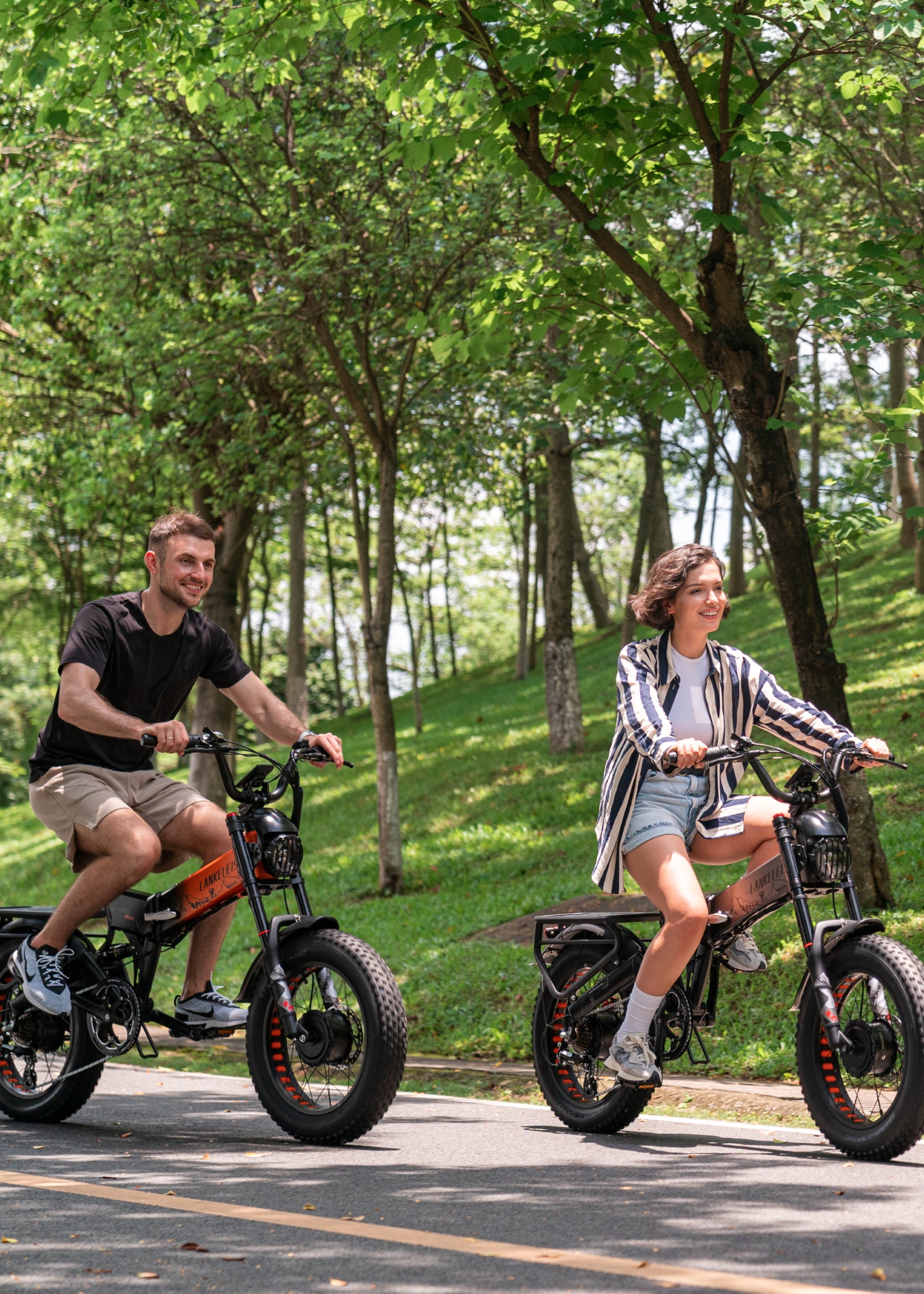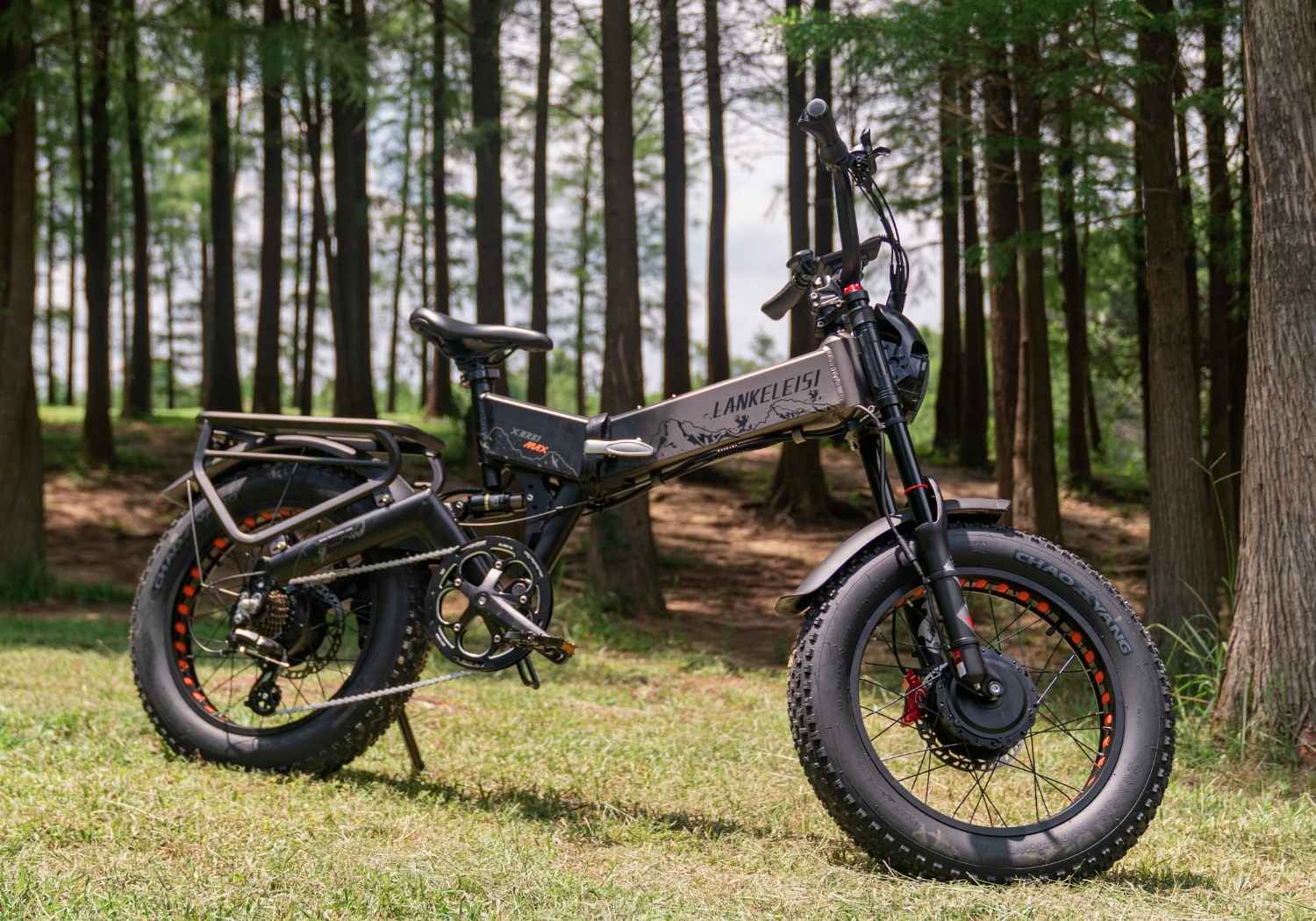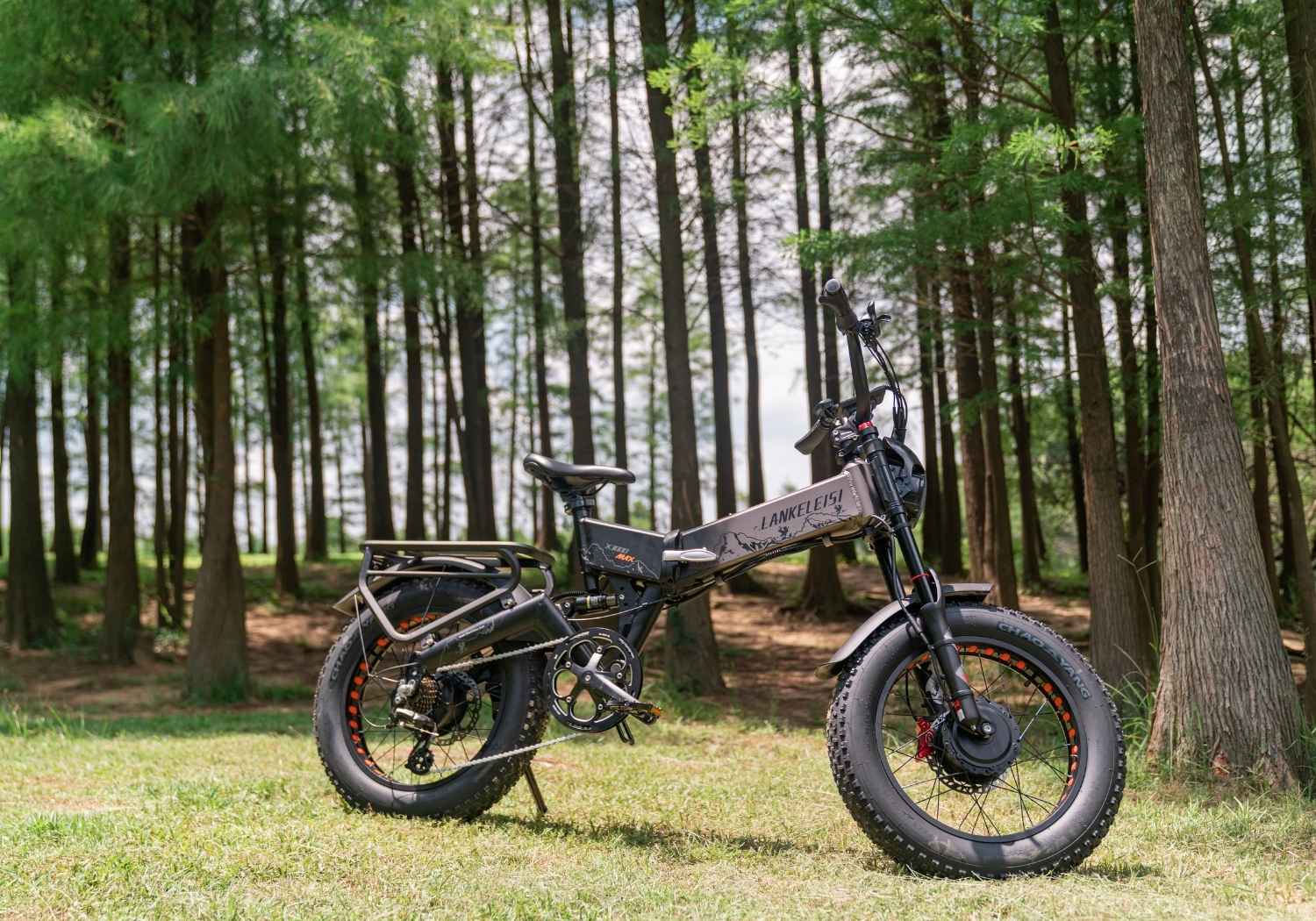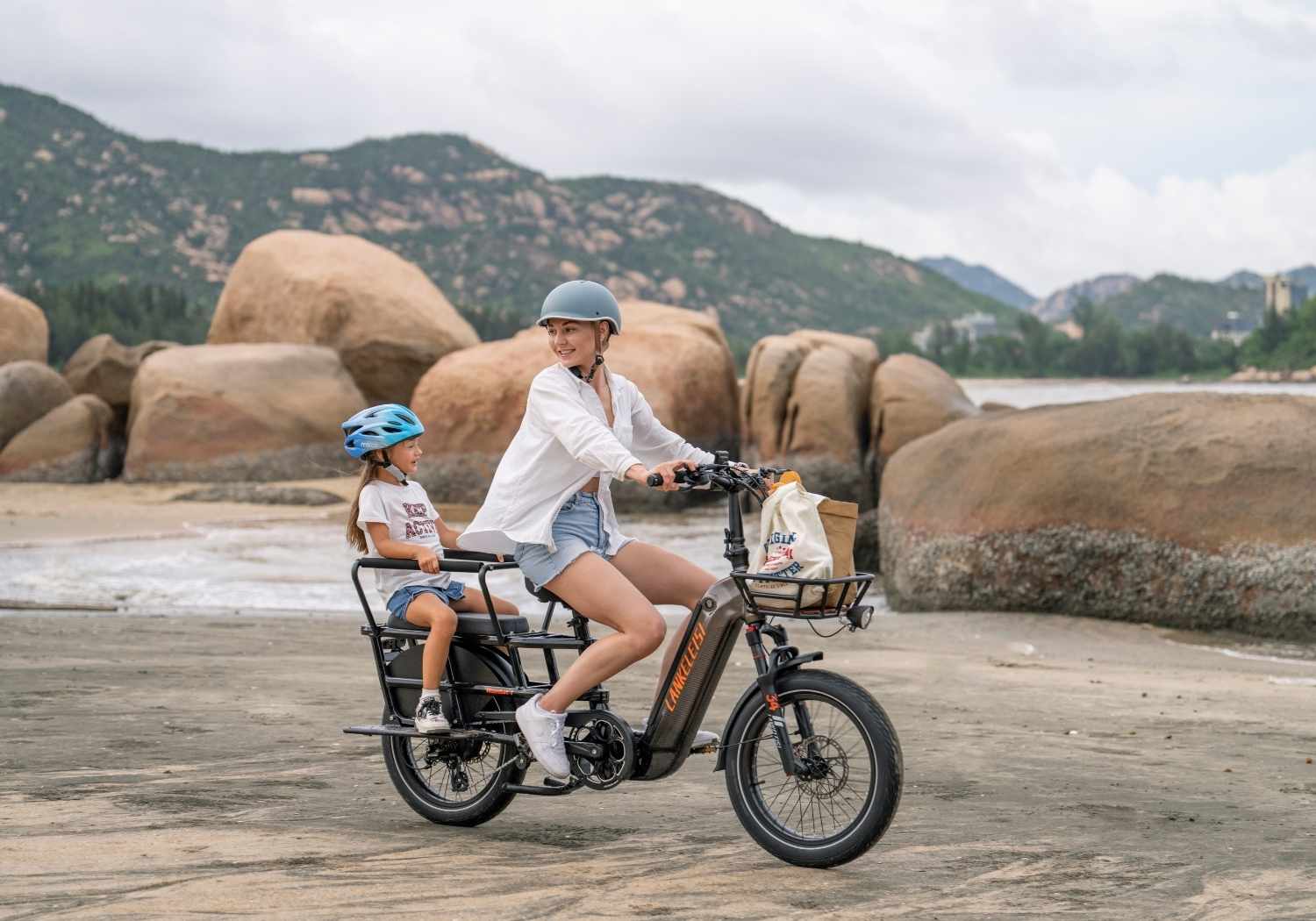Have you ever wondered why some e-bikes offer a smooth, natural pedaling experience, while others benefit from more or less rapid assistance? The answer lies in one key factor: the sensors used to manage the electric assistance.
Two types of sensors dominate the e-bike market: torque sensors and cadence sensors. But what are the differences between these two technologies? Which offers the best riding experience? How do you choose the right sensor for your riding style? This article will tell you more.
What is a torque sensor?
How it works
Torque sensors are an advanced technology used on high-end e-bikes, including off-road, sport, and long-distance models. Unlike cadence sensors, they not only detect pedal movement but also measure the force exerted by the rider.
The harder you pedal, the more assistance the motor provides. This assistance, proportional to your effort, makes pedaling more natural and intuitive. The intelligently designed system adapts in real time to your style, ensuring a smooth and personalized riding experience.
Whether you're starting off on a hill, accelerating through a corner, or maintaining a constant speed on hilly terrain, this precision allows the e-bike to respond instantly to your needs.

According to technical definitions provided by the European Cyclists' Federation, torque sensors precisely measure the force exerted on the pedals in order to adjust the motor's power in real time.
Integrated technology
Torque sensor technology relies on strain gauges located in the crankset, bottom bracket, or sometimes in the rear wheel. These gauges detect micro-deformations generated by leg pressure while pedaling and transform these signals into data that can be used by the motor controller.
The measurement accuracy is extremely high, expressed in newton meters (Nm), a unit used to quantify the applied torque. This level of precision allows for almost instantaneous adjustment of the motor's power according to variations in the cyclist's effort.
Advantages of torque sensors
One of the main advantages of torque sensors is the natural pedaling feel. The rider feels more powerful without electric assistance. This smooth pedaling is particularly noticeable on technical trails, steep climbs, or long rides.
Another major benefit is the increased range. Since the electric assistance is triggered only based on the actual force applied, battery usage is more intelligent, resulting in a longer range on a single charge.
Torque sensors provide better bike control, especially in tight corners, uphill, or on slippery surfaces. This allows the rider to maintain control of the power output, improving safety and steering precision.
For athletes or experienced cyclists, torque sensors offer a more engaging and motivating experience, as assistance always requires effort.
Disadvantages of torque sensors
While torque sensors offer many advantages, they also have some disadvantages that should be considered before purchasing.
E-bikes equipped with these sensors are more expensive due to the complexity of the system and the fragility of the components. While this investment is perfectly justified for regular cyclists, it may be out of reach for some casual cyclists.
The minimum force required to activate the assistance may not be suitable for everyone. Unlike cadence sensors, pedaling is required to activate the motor. This may be a barrier for older cyclists, those with joint pain, or those who prefer immediate assistance without additional effort.
Replacing or maintaining a torque sensor can be more complex and expensive, as it requires more specialized expertise.
What is a cadence sensor?
How it works
A cadence sensor is one of the most common assist systems on entry-level and mid-range e-bikes. Its operation is simple: it measures the rotational speed of the pedals, or revolutions per minute (RPM).
Contrary to popular belief, this sensor does not take into account the force exerted while pedaling. As soon as you start pedaling, even without exerting significant effort, the system detects the movement and automatically activates the motor assistance.
This binary operation (pedaling = assistance) makes it easy to understand and use, especially for beginners or cyclists who prioritize comfort over effort.
Components and technologies used
Cadence sensor technology typically relies on a magnetic disc mounted on the crankset , combined with a nearby magnetic or optical sensor. As you pedal, the magnet passes in front of the sensor, which counts your pedal strokes and thus calculates your cadence.
This system is inexpensive to produce, making it widely used on many urban e-bikes . It is also relatively easy to maintain and replace if something goes wrong.
Although this technology is relatively basic, it works effectively on a smooth, level road with minimal effort.
Benefits of Cadence Sensors
The main advantage of a cadence sensor is its ease of use. As soon as you start pedaling, the electric assistance automatically kicks in. This reduces the effort required, making it a popular choice for many urban cyclists or those who want to avoid fatigue.
Another advantage is the price. E-bikes equipped with cadence sensors are more affordable, making them more accessible to a wider audience.
Cadence sensors are also highly adaptable: you can pedal slowly or quickly, and the bike's motor provides instant assistance as soon as it detects pedal rotation, regardless of the effort applied. This is an ideal option for cyclists with limited mobility or those who prefer a smoother ride.
Disadvantages of cadence sensors
However, this simple design has its limitations. The main drawback of the cadence sensor is its lack of responsiveness and accuracy. It can take a second or two for the assistance function to activate after pedaling begins, which can make the riding experience less smooth, especially when starting off or going uphill.
The motor's behavior remains constant regardless of the intensity of the thrust, which can create a feeling of mechanical and unintuitive assistance. This can sometimes cause abrupt acceleration, which is unnatural and difficult to control on uneven terrain.
Immediate activation of the motor after pedaling, even lightly, can increase battery consumption and reduce the bike's range.
Comparison between torque sensor and cadence sensor
Choosing between a torque sensor and a cadence sensor depends on the riding experience you're looking for with your e-bike. To help you understand, we've compared the most important criteria for cyclists.
Reactivity
The torque sensor stands out for its exceptional responsiveness. It reacts instantly to the pressure applied to the pedal. The result? Smooth, progressive, and immediate assistance. As soon as you pedal slightly harder, the motor automatically adapts to support your effort.
On the other hand, a cadence sensor can sense a slight lag between the start of pedaling and the activation of the motor, particularly when climbing or on a technical trail.
Pedaling sensation
Thanks to a torque sensor, pedaling remains natural and intuitive. The cyclist feels perfectly in tune with their bike: the assistance doesn't replace the effort, but rather extends it. This creates a riding experience very similar to that of a traditional bicycle, but with more power.
On the other hand, a cadence sensor can feel somewhat mechanical. Even without exerting force, light pressure on the pedals triggers the assistance, making the riding experience less engaging and more passive. This approach is better suited to leisurely city rides or those who prefer a relaxed ride.
Personalization and control
Bikes equipped with a torque sensor offer better control over power delivery, allowing you to adjust your effort based on the terrain or your physical condition.
With a cadence sensor, control is more limited. The motor runs more smoothly, regardless of the force applied. This often requires manual adjustment of the assistance level, which can be restrictive.
Energy consumption
An often overlooked benefit of a torque sensor is its ability to better manage the e-bike's battery life. Since the assist function only activates when you pedal hard, the motor reduces unnecessary effort and thus optimizes energy consumption.
Conversely, a cadence sensor can lead to excessive energy consumption. Since the motor activates immediately when you pedal, even without effort, it puts more strain on the battery, especially over long distances.
Price
Bikes equipped with cadence sensors are generally more affordable. Simpler and less expensive to produce, these sensors are found on most entry-level or urban electric bikes.
On the other hand, models equipped with torque sensors are generally more expensive, as they are aimed at more demanding users and incorporate more complex components. They are generally found on electric mountain bikes, touring bikes, or high-end performance-oriented models.
Recommended LANKELEISI Electric Bikes
If you're looking for daily city commuting, optimal comfort, or a limited budget, a cadence sensor is the ideal choice: simple, affordable, and effective, it's suitable for everyday use. If you're looking for smooth, natural, and responsive electric assistance, especially for mountain biking or hilly terrain, a torque sensor is your first choice. It offers better energy management and a more intuitive pedaling experience. Here are some recommended LANKELEISI e-bikes equipped with torque sensors:
Models equipped with torque sensors: power and precision
For demanding cyclists or off-road mountain bike enthusiasts, Lankeleisi favors the integration of torque sensors on its most efficient models.
LANKELEISI X3000 MAX : This dual-motor electric fat bike is equipped with a torque sensor that adjusts assistance in real time based on pedaling force. On rough terrain or uphill, it guarantees instant responsiveness, perfect power control, and optimal autonomy.

LANKELEISI MG800Max : Designed for off-road adventures, this model also features a torque sensor, providing a smooth driving experience even in extreme conditions.
Why does LANKELEISI use torque sensors in its high-end electric mountain bikes?
By integrating torque sensors into its high-end electric mountain bikes , LANKELEISI has significantly improved the ride quality, safety and range of its bikes. The assistance system has become more intelligent, adapting to the rider's pace while reducing battery consumption.
FAQ
What is the lifespan of a torque or cadence sensor?
Under normal use, a torque sensor typically has a lifespan of between 15,000 and 30,000 kilometers. Cadence sensors are simpler and can operate for longer periods without requiring any special maintenance.
Is it possible to change the sensor type of an electric bike?
Yes, but it involves complex modifications to the motor, controller, and software. LANKELEISI recommends choosing an e-bike equipped with the appropriate sensor.
Does the type of sensor influence the autonomy?
Yes. The torque sensor optimizes assistance based on pedaling force, which reduces energy consumption. On the other hand, a cadence sensor can consume more energy if you pedal lightly.
How do I know what type of sensor is installed on my bike?
If the assistance kicks in as soon as you start pedaling, it's a cadence sensor. If it varies depending on the force you exert, it's a torque sensor. You can also consult your owner's manual or ask your e-bike dealer.
Conclusion
The choice between a torque sensor and a cadence sensor depends mainly on your needs and riding style. If you're looking for more natural and responsive assistance, opt for a bike equipped with a torque sensor. For a simpler and more economical solution, the cadence sensor remains an excellent choice.
For a smooth and sporty experience, we recommend models like the LANKELEISI X3000 MAX, equipped with a high-performance torque sensor and a 2000W dual motor. More information on the official LANKELEISI website .







